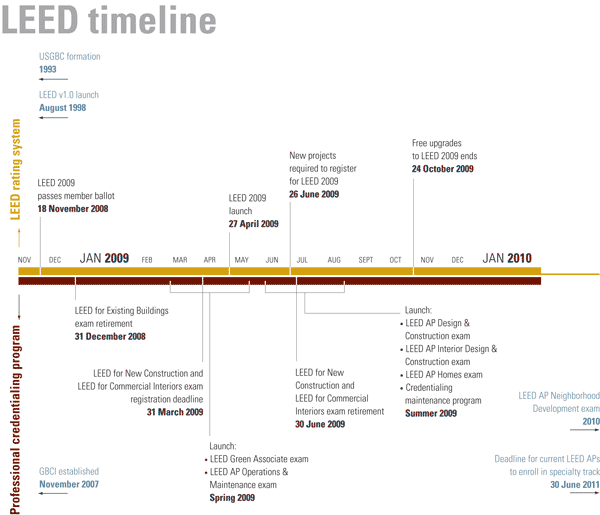LEED Looks Ahead With an Ambitious Overhaul
For the certification piece, GBCI will manage 10 organizations, including Underwriters Laboratories and Lloyd's Register Quality Assurance, which will in turn oversee the project review process. Under the old system, all LEED project submissions were reviewed by the USGBC with the support of independently contracted reviewers. According to USGBC and GBCI, the administrative restructuring should eliminate the review and certification delays that have long plagued the LEED program. In addition, the two organizations say the changes will bring the program in line with the protocols of the International Organization for Standardization (ISO) and the American National Standards Institute (ANSI). Certification will "become a real third-party process," says Horst.
Also being closely watched by the green building community are the coming modifications to the AP program. The changes, which will be phased in over the coming year, include introduction of a three-tiered system of credentials. The lowest tier will be LEED Green Associate. It is intended for people who want to demonstrate a commitment to green building practices but may not be directly involved in LEED projects. GBCI expects that this title will appeal to nontechnical professionals, such as marketing staff in design firms or lawyers involved in real estate development deals. The second tier will be roughly the equivalent of the current AP credential, but will include specialty tracks that correspond to the various LEED rating systems. Finally, LEED Fellow, will designate an "elite" level of expertise.
The new credentialing is a response to concerns that passage of the current multiple-choice qualifying exam requires rote memorization rather than a true understanding of green building practices and principles. "The goal is to make sure that the credentials are targeted and meaningful," says Peter Templeton, GBCI president.
Although GBCI is still developing the criteria for fellow status, it has already outlined the requirements for the first two tiers of accreditation. Earning the Green Associate credential will involve passing an exam that will cover core concepts and the key points of the LEED rating system. Qualification for the AP status will have two steps: Candidates will be required to take the first-tier exam as well as a test tailored to their chosen specialization. In addition, AP hopefuls will have to demonstrate LEED project experience. GBCI plans to institute continuing education requirements for both designations-15 hours for Associates and 30 hours for APs, biennially.
The more than 101,00 people who have passed the current exam, and the many more expected to successfully complete the test before GBCI discontinues it at the end of June, will be permitted to retain their AP designation. They will also have the option of enrolling in the new system. But in order to adopt one of the specialized credentials, they will need to complete the continuing education requirement.
GBCI hasn't yet provided the details of what kind of courses will count, except for noting that 6 of the 30 hours will need to be "LEED specific." However, many observers expect that satisfying the requirement will be relatively painless, at least for professionals who participate in continuing education in order to maintain their licenses. "For architects and engineers, there will be overlap," predicts McKellar. "But from those [disciplines] that don't already have to complete continuing education, there will resistance," he says.

Although the new LEED officially launched in late April, project teams have the option
of registering buildings under the old system through June 26. Teams already using
previous versions of the rating system can migrate projects for free through October
24. Rollout of a new program for credentialing the professionals who work on LEED
projects is also under way as part of the revamp effort.
Data: USGBC and GBC
With regard to changes to the LEED program as a whole, the reaction of seasoned LEED users has been mostly positive. Many design consultants say that the new system should not be a huge adjustment for project teams. "Obviously there will be a learning curve," says Rob Bolin, a senior vice president with mechanical engineering firm Syska Hennessy, in Chicago. "However, if people are completing LEED projects now, they will be able to continue to do so in the future," he says.
Even the recession, sources predict, should not be that much of a factor in market uptake. "The economy will hamper total construction volume," according to OWP/P's Ekman. "But it shouldn't change the percentage of projects that seek certification."
Information Graphics: Encarnita Rivera; Data: USGBC, except as noted.








